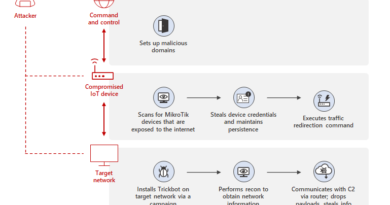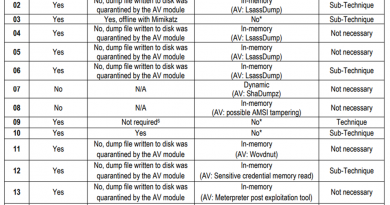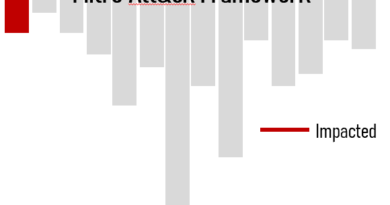How one Microsoft product manager acts as champion for identity security

A technology career embodies the ancient Roman saying that “luck happens when preparation meets opportunity.” Few industries are as dynamic, fast-paced, or intense as technology. With so many challenges to solve, opportunities are everywhere, but as I’ve learned myself through the years, the best opportunities are not just the ones right in front of you, they’re the ones you create.
Nitika Gupta, a Microsoft Principal Product Manager who leads the team responsible for enterprise admin capabilities for identity security, personifies the spirit of preparing for, seizing, and creating opportunities, which she has done not only for herself but also for the people around her. Since joining Microsoft in 2013, she has never stayed complacent. Nitika is always learning, growing, and honing her expertise in identity, product management, and leadership so she’ll be ready to take on the next big challenge.
So many game-changing technologies started with a napkin, sticky note, or whiteboard, but no great idea ever comes to fruition without a champion determined to steward it from concept to working feature. Nitika has championed some of our most groundbreaking technologies, including Conditional Access, the heart and soul of Microsoft’s Zero Trust architecture. Her hard work and optimism have made her a go-to person on my team for new initiatives. I feel so fortunate to work with Nitika, and I hope her story inspires you to prepare for, seize, and create opportunities in your own career.
Nitika’s interview with Microsoft Partner Director of Identity Security Alex Weinert has been edited for clarity and length. You’ll find a video snippet embedded in the interview so you can hear Nitika talk about her work philosophy.
Alex: Tell us, Nitika, how you got to Microsoft.
Nitika: I grew up in India in a small city. I did really well in school in general, but I did really well in computer science courses, too. Naturally, I picked computer science as I headed to college in Singapore.
My last year at the National University of Singapore, I spent most of my time applying to companies in the United States that would sponsor my work visa. Since I was studying computer engineering, and all my internships were coding, I applied as a developer. During my second interview with Microsoft, the interviewer told me about a new role called program manager, which is now called product manager.
They didn’t hire program managers from overseas as much back then—only developers. The gentleman who interviewed me put in a good word for me, so the program management team in Redmond decided to interview me.
We ended up doing phone calls at odd times because I was sitting in Singapore and the interviewers were in Redmond. They ended up giving me an offer to join Microsoft as a program manager in the identity team. I was like, “This is exactly what I want,” since I wanted to relocate to the United States. Program management was new but sounded cool and I told myself if I didn’t like it, I could go back to being a developer. I had no clue what identity was, but that’s how I ended up in identity at Microsoft.
Alex: Incredible. What was your first project as a new product manager at Microsoft?
Nitika: I worked on resiliency of Microsoft Azure Active Directory (Azure AD) services. I started with the core authentication stack, but I wanted to work on something more customer-facing, where I could talk to customers firsthand. My manager happily agreed, so I started working on multifactor authentication (MFA). That’s when I met you, Alex. I still remember the whiteboarding session we did on Conditional Access in your office, which we converted into mockups for a road show. We ended up building it, and now it’s the most used feature in Azure AD today.
Alex: Back then, I was responsible for Latin America, and we did a customer tour there. On the last day, you and I had a conversation. You said you wanted to do bigger things. And I challenged you to go figure out what problem you wanted to solve and just solve it. Can you talk a bit about that?
Nitika: Yeah. Back then, I was working on admin experiences for identity security and was really spread too thin. I had a broad scope but didn’t feel like I was owning a business. I remember writing down my thoughts about what I was doing, what I liked and didn’t. I came to you, we had a chat, and you challenged me to think about what “my ideal role” looked like. And that’s a question I now often use to challenge my team when they want to make a change because as a manager, I’m very committed to giving them opportunities that align best with their passions and interests.
In any event, I came up with security adoption.
Alex: You engaged the field, the small and medium-sized business (SMB) market. You found partner teams and went super creative in a very entrepreneurial way—all as an individual contributor. You created what is now security defaults and the identity secure score, as well as the big MFA adoption push. Then another opportunity came your way. Tell us about that.
Nitika: It was an opportunity I didn’t see coming. A lot of opportunities have come from getting to a point where I wanted more challenge, but in this case, I was having a blast, right? I got to create my own role. I was driving this mission for adoption of security best practices. I was very jazzed about it, and suddenly you and our leadership surprised me with an opportunity to drive a compete feature on the cloud provisioning team. My career in identity until that point had been about the cloud. Once you get your identities in the cloud, how can we help you protect those identities with MFA, Conditional Access, identity protection, and adoption of security best practices? But I had little knowledge of the on-premises world, and this new job was all about bringing identities from on-premises to the cloud.
So for me, it was a very tough decision because I felt like I did not have the expertise and the experience I would need. Other people had been working on sync and provisioning scenarios for years, so I needed to leverage their expertise to build the best possible product for our customers. We had this ambitious goal of delivering a preview in six months or so, which ended up being closer to a year. It was a fun journey working on a zero-to-one product where I had zero expertise to start with, but we still made it happen.
Alex: Then we tapped you on the shoulder again.
Nitika: When you and Alex Simons offered me the opportunity to lead the Conditional Access, MFA, and security adoption team, I said, “This is out of my league.” I was very unsure and took a few days to accept, even though it was a dream job for me. But thanks to the support from you and Alex, I ended up taking the opportunity. I started leading the team right when we all began working from home at the start of the pandemic. It’s been very gratifying to support the team in such uncertain times and yet deliver the business outcomes.
Alex: One of the things I love is the way it came full circle, from that whiteboard session where we were just kind of like, “Hey, wouldn’t it be cool if…,” to something that’s now the heart of our Zero Trust strategy at Microsoft. You’re leading a 15-person team in three regions as we’re making huge bets on supporting the Cybersecurity Executive Order from the United States government, phish-proof credentials, the protection of machine accounts, and MFA adoption. Watching you grow and become such a strong leader has been awesome.
Nitika: Thank you. It’s about protecting our customers. That gets me excited every day I come to work. And it’s really the team, right? Every day, I think it’s about making sure everyone on the team can do their best work and achieve their career goals.
Learn more
Learn more about Microsoft identity and access management.
To learn more about Microsoft Security solutions, visit our website. Bookmark the Security blog to keep up with our expert coverage on security matters. Also, follow us at @MSFTSecurity for the latest news and updates on cybersecurity.
READ MORE HERE



